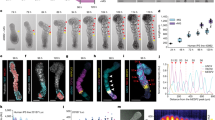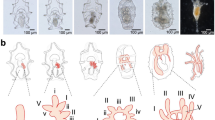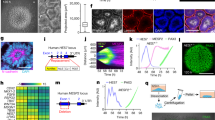Abstract
IN a recent publication1, attention has been directed to the occurrence of a peculiar modification of the outer layer of the ectoderm of the chorion (and choriogenous ectoderm) of Sphenodon (Reptilia, Rhynchocephalia) to produce very large cells with well-marked boundaries, domed free edges and large nuclei. These modified cells show particularly clearly in preparations stained with borax carmine, in which the cells tend to assume a characteristic yellow–orange colour. These cells were first observed by Dendy2 and Schauinsland3, who were working independently on the embryology of Sphenodon. They applied the term ‘teloderm’ to the tissue, a term previously used by Mehnert4 to describe tissue to which the term ‘epitrichial layer’ more properly applies5.
This is a preview of subscription content, access via your institution
Access options
Subscribe to this journal
Receive 51 print issues and online access
$199.00 per year
only $3.90 per issue
Buy this article
- Purchase on Springer Link
- Instant access to full article PDF
Prices may be subject to local taxes which are calculated during checkout
Similar content being viewed by others
References
Fisk, A., and Tribe, M., Proc. Zool. Soc. Land., 119, Pt. 1 (1949).
Dendy, A., Quart. J. Microscop. Sci., 42, 1 (1899).
Schauinsland, H., Anat. Anz., 15 (1899).
Mehnert, E., Morph. Arb., 4 (1895).
Kerbert, C., Arch. mikro. Anat., 13 (1876).
Author information
Authors and Affiliations
Rights and permissions
About this article
Cite this article
FISK, A. Modification of the Ectoderm in Sphenodon. Nature 164, 617–618 (1949). https://doi.org/10.1038/164617b0
Issue Date:
DOI: https://doi.org/10.1038/164617b0
Comments
By submitting a comment you agree to abide by our Terms and Community Guidelines. If you find something abusive or that does not comply with our terms or guidelines please flag it as inappropriate.



